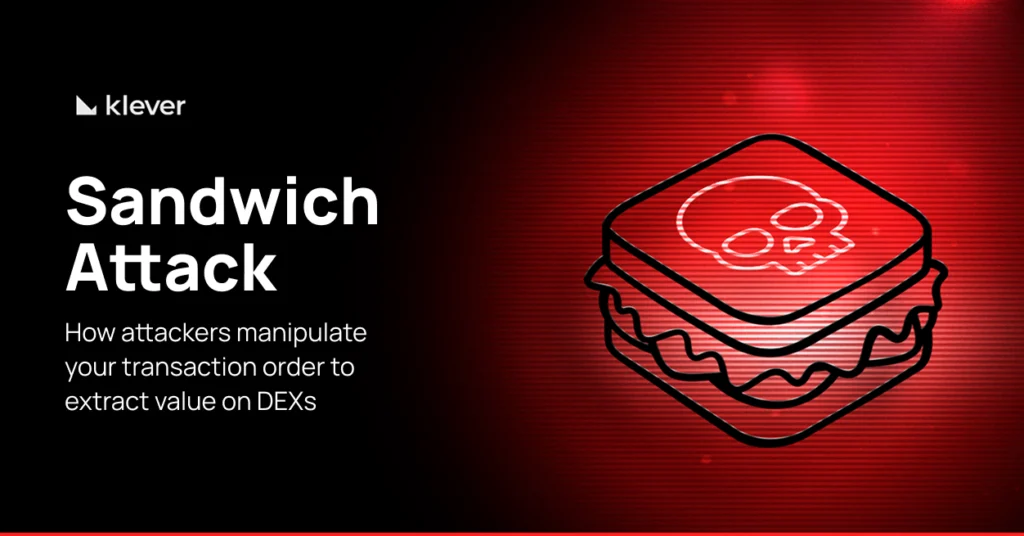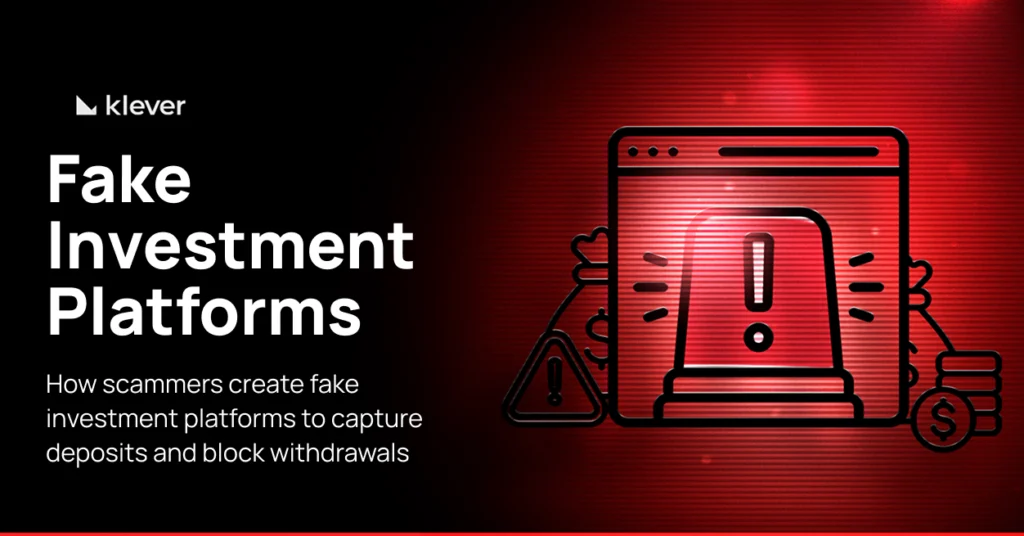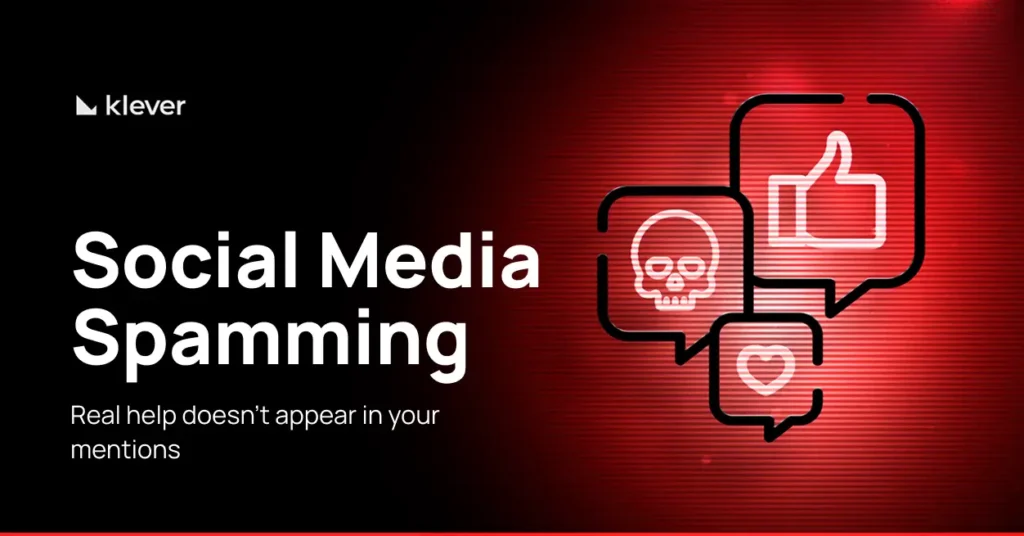
Spam on social media isn’t just annoying—it’s a real problem. You see it all the time in replies, comments, and tags. Most of it looks harmless at first—maybe a giveaway, a support message, or a link that sounds too good to ignore.
But behind a lot of these posts are scams meant to steal your info, often a gateway to phishing scams, wallet-draining links, fake giveaways, and impersonation schemes.
In this article, you’ll learn how to spot social media spam, why it’s more dangerous than it looks, and what you can do to protect yourself and your audience.
What is social media spamming?
Social media spam refers to unwanted, repetitive, misleading, or malicious content that appears in public comment sections, replies, DMs, or tags. Its purpose is often to:
- Trick users into revealing sensitive information
- Direct traffic to phishing or scam sites
- Inflate visibility for low-quality or fraudulent promotions
- Disrupt genuine conversations and hijack engagement
Spammers typically rely on automated bots, fake accounts, or low-cost engagement farms to spread content across multiple profiles and threads in minutes.
Common types of spam on social media
Spam comments are everywhere on X. The moment a post starts gaining attention—whether it’s about finance, tech, or anything trending—it doesn’t take long before the replies are flooded with fake offers, suspicious links, and generic comments that don’t seem to fit the conversation.
What makes this type of spam so effective is how normal it can look. Many of the messages are short, friendly, and easy to miss if you’re scrolling quickly. But the risk is real—clicking one bad link can expose your account or wallet to people who know exactly how to take advantage.
Spotting social media spam: what to watch out for in crypto and beyond
1. Fake customer support replies and DMs
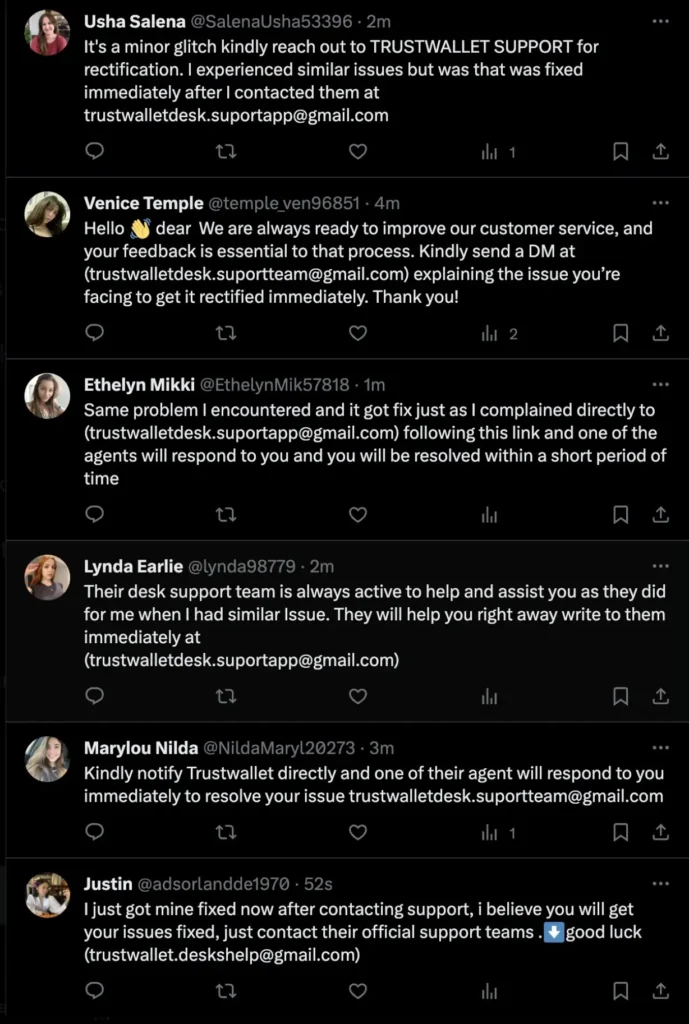
A common and dangerous form of spam comes from accounts pretending to be official support. These replies often appear under posts from wallets, exchanges, or platforms—especially when someone comments about an issue. Bots or impersonators jump in fast, offering help and asking users to click external links, connect their wallet, or fill out a “verification” form. Some even include fake but realistic-looking email addresses like [email protected].
These messages are usually short, polite, and designed to look legitimate. They’re timed to hit when people are frustrated or confused, making them easy to fall for. This is a subtle but effective form of social engineering that’s especially common in crypto.
Important reminder: Never contact support through DMs or replies. Never share your seed phrase, private key, or passwords. If someone asks, it’s a scam. Always check if the support email belongs to an official domain. If it ends in @gmail.com, it’s fake. Legitimate support uses company domains like @trustwallet.com.
2. Trading signal groups and fake recommendations

Spam replies often promote Telegram groups that offer “trading signals” or insider tips. Comments like “Join this group, they helped me 10x” or “Follow this trader for guaranteed returns” are everywhere. These groups usually lead to pump-and-dump schemes, recycled advice, or subscription scams. In worse cases, they pitch fake tokens or ask for wallet access.
You’ll also see spam promoting sketchy platforms or influencers. These posts are often copy-pasted across unrelated tweets to make them look popular.
Reminder: Be skeptical of any financial advice you find in random comment sections. Real platforms and professionals don’t need to spam your feed to gain trust.
3. Hashtag hijacking and mass mentions
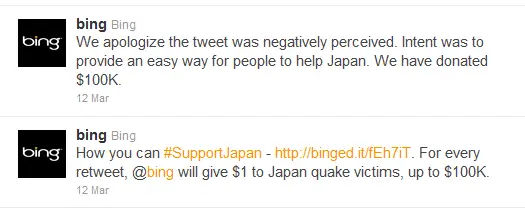
Spammers often use trending hashtags like #Bitcoin or #Ethereum in unrelated posts to boost visibility. Sometimes these posts include links to fake tokens or wallet-draining sites. Other times, they’re just noise meant to exploit a trending topic.
You’ll also see spam accounts tagging dozens of users in one post—often promoting an airdrop or new project. These messages are designed to create a sense of urgency or hype, but they’re rarely legitimate.
Reminder: Avoid engaging with posts that abuse hashtags or tag you out of nowhere. Being mentioned doesn’t mean the offer is real.
4. Phishing emails and impersonation scams
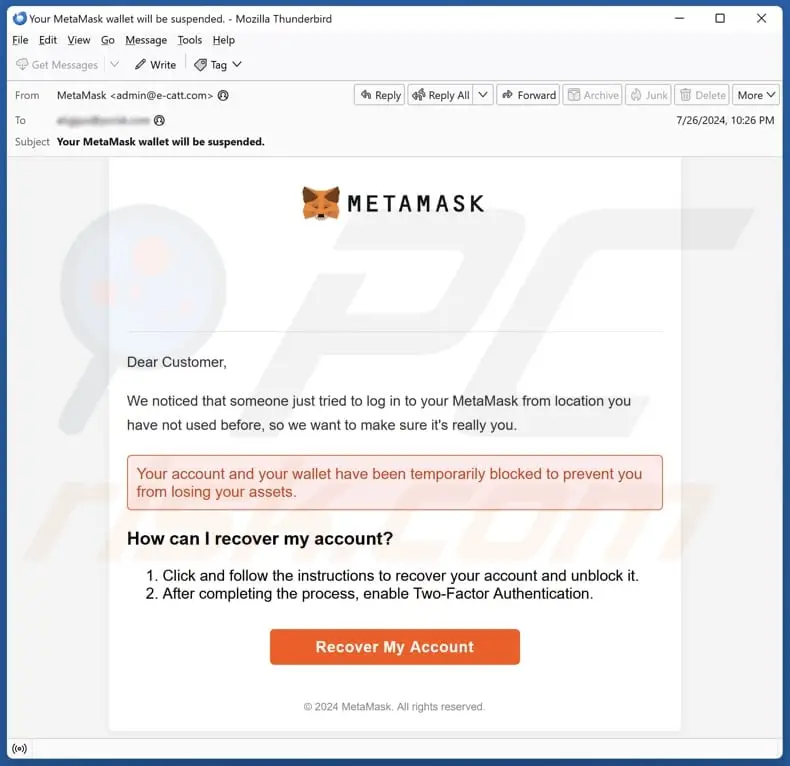
Spam isn’t just in the replies. It also lands in your inbox. Phishing emails that look like they’re from trusted wallets or exchanges often use names like [email protected]. They warn you about account issues or invite you to claim rewards, using urgent subject lines to get your attention.
The links inside lead to fake login pages or wallet drainers. Some go further by mimicking entire websites of known platforms. If you’re in a rush or not looking closely, they’re easy to fall for.
Important reminder: Never click links in unsolicited emails. Always verify through the project’s official site. No legit platform will ask for your seed phrase or password via email or DM.
5. Fake airdrops and giveaways
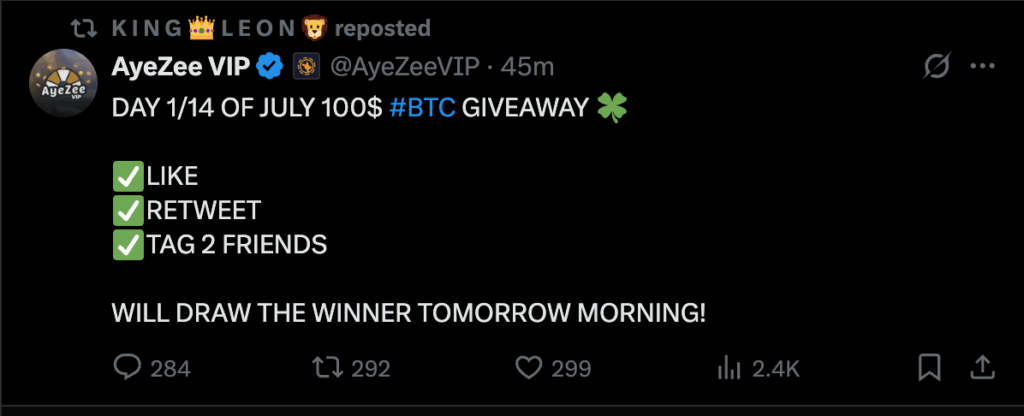
Free airdrop scams are everywhere. Posts promise tokens, NFTs, or early access to a project—but only if you connect your wallet, verify your identity, or act fast. These often show up in comment sections, fake influencer posts, and paid ads.
The sites may look convincing, but they’re designed to capture your data or approve smart contracts that give scammers control of your wallet.
Reminder: No real project will ask for sensitive info in exchange for a reward. Always verify airdrops through official sources.
6. Token shilling and promotion spam
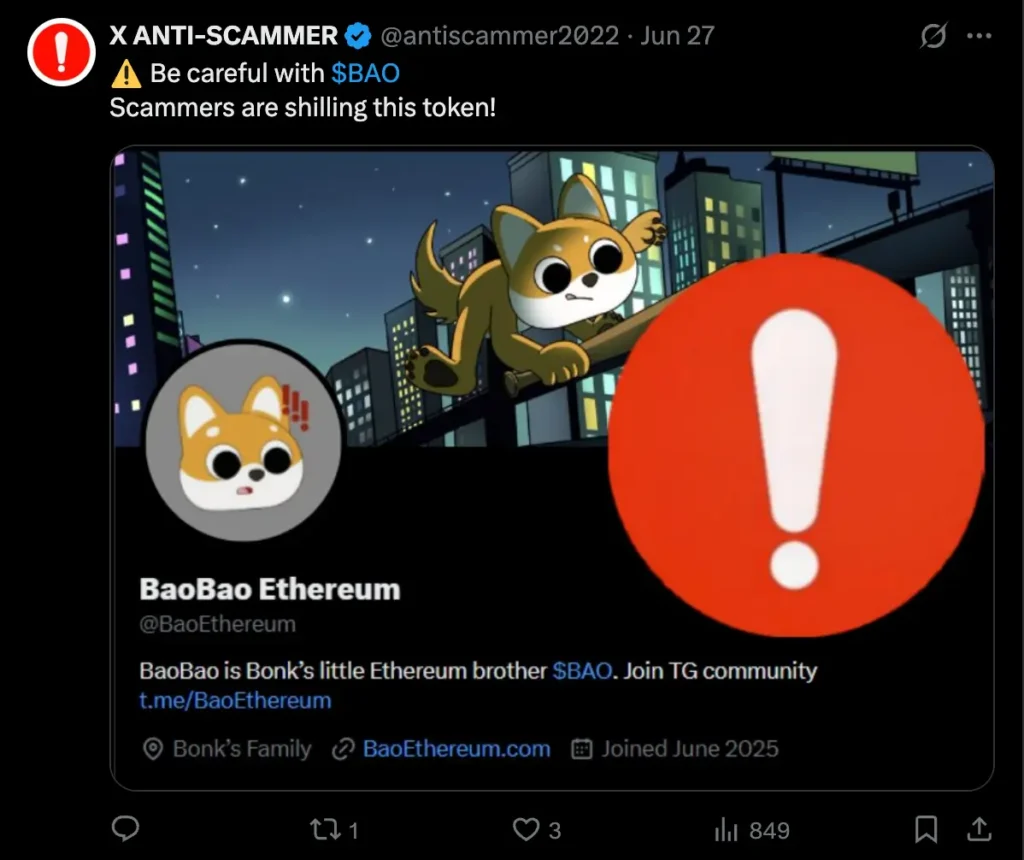
Some accounts reply to tweets praising a random token or project. They might say things like “Just got 5x on $XYZ!” or “This team is building something big.” The language is always vague, overly positive, and usually repeated across multiple posts.
These posts are often part of paid promotion or pump-and-dump campaigns. The goal is to create fake hype, hoping others buy in without checking the facts.
Reminder: Just because a token is getting attention in the comments doesn’t mean it’s worth trusting. Look for real details, not recycled hype.
7. Spoofing Verified Accounts

One of the more deceptive scams on social media involves fake accounts that impersonate verified profiles. Scammers create lookalike pages that mimic brands, influencers, or public figures—copying profile photos, display names, bios, and even tone of voice to appear legitimate.
A common tactic is using these spoofed accounts to promote fake giveaways, request crypto “donations” for urgent causes, or push questionable investment opportunities. At a glance, it can be convincing, especially if you’re scrolling quickly or already trust the person being imitated.
How to identify it:
Always double-check the username. Scammers often rely on subtle changes, like @ElonMusk_ instead of @ElonMusk, or swap characters (like “I” for “l”). Look at the account’s creation date, follower count, and post history. Most fake accounts are recently made, have limited activity, and lack any meaningful engagement.
Important reminder:
If a “verified” account suddenly asks you to send funds, connect your wallet, or share personal information—don’t do it. Real public figures and brands won’t reach out this way. When in doubt, verify through official channels.
Why social media spam is dangerous
Social media spam causes real harm—not just irritation. Here are the key risks:
1. Financial loss
Spam comments often contain links to wallet drainers, fake dApps, or phishing sites. One click can expose users to irreversible financial damage, especially in crypto.
2. Brand damage
When spam overflows under a project’s posts, it signals to the audience that the account is unmanaged or unsafe. Trust is quickly lost, especially when impersonators begin replying directly to community members.
3. Community disruption
Spam buries authentic conversations and discourages real users from engaging. The result is a drop in meaningful engagement and a rise in misinformation.
4. Algorithmic penalties
Excessive spam in replies or comments can signal low-quality content to social media algorithms, potentially reducing your content’s reach and visibility.
How to protect yourself from spam and scams
1. Inspect links before clicking
Always verify URLs before clicking. Avoid shortened or suspicious links, especially if they promise free rewards or wallet verifications.
2. Never share private data
No legitimate project, support team, or brand will ever ask for your private key, seed phrase, password, or wallet connection via social media.
3. Verify accounts before trusting them
Scammers often mimic real usernames with slight variations or stolen profile photos. Always check the handle, follower count, and tweet history before interacting.
4. Avoid “too good to be true” offers
Scam content often uses urgency and fake rewards to pressure users. If a post promises instant returns, free tokens, or limited-time opportunities without verification—it’s most likely fake.
How to stay safe from social media scams in crypto
Social media scams are evolving fast and they’re everywhere. From fake customer support replies to phishing emails, wallet drainers, and comment section shills, these tactics are designed to trick users into giving up sensitive information or access to their funds. In the crypto space, where one wrong click can cost everything, the risks are real.
If you’re active on platforms like X (Twitter), Telegram, or anywhere crypto conversations happen, you need to stay alert. Don’t trust random replies, don’t join unknown groups promising trading tips, and never share your seed phrase or private keys—no matter how convincing the message may seem.
To protect your wallet and your data, stick to verified links, double-check project websites, and treat every unexpected message or offer with caution. Staying safe online isn’t just about what you know—it’s about what you ignore.
Be safe. Be Klever.


